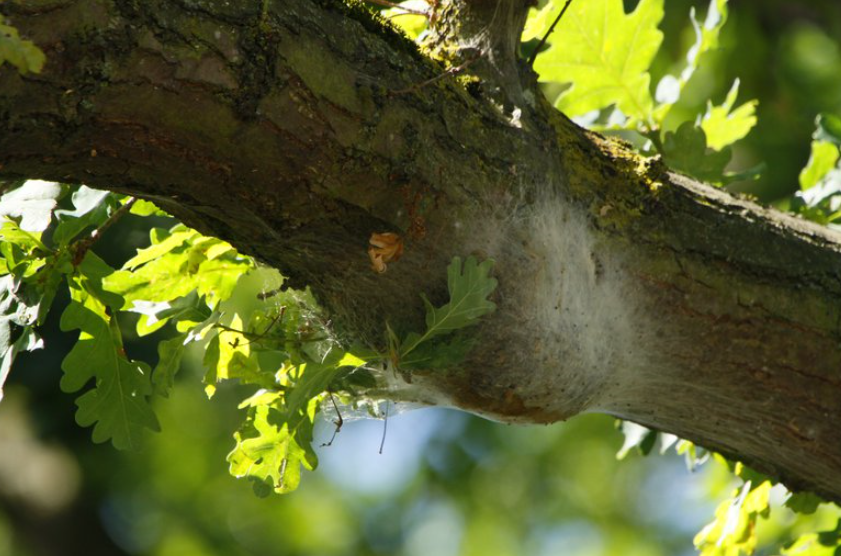BALI Issue Advisory Alert for the ‘Oak Processionary Moth’
The ‘Oak Processionary Moth’ (Thaumetopoea processionea) caterpillars are a fairly recent introduction into the UK having been imported from the Netherlands (most likely in egg form on young trees) have been sighted on trees in Hampshire. BALI have issued a notice for all members to remain vigilant and report all sightings. The OPM is an established pest in many areas of London, whilst the rest of the country is a designated Protection Zone (PZ).
Why are they are risk?
Whilst in caterpillar life stage, the OPM poses a risk not only to our native oak trees but also humans and some animals.
The moth gets its name from its unusual processing behaviour of the caterpillars because they tend to move in nose-to-tail lines – consuming foliage as they move. The caterpillars consume the oak leaves which can then lead to severe loss of foliage, weakening the trees and making them more vulnerable to other diseases, drought or flooding.
The second risk is one to human health. The OMP caterpillar’s tiny hairs contain a toxin which can lead to itching skin lesions, rashes, and less commonly sore throats, breathing difficulties or eye problems. The hairs from the caterpillars are commonly found in their nests so it is advisable to avoid contact with both nest and caterpillar.
What do they look like?
Mature caterpillars are characterised by long, white hairs, on darker bodies. They are likely to form processions (hence the name), and found primarily on Oak trees. They are most likely to be seen in summer. Nests are silky in appearance, and almost always on the trunk or large limbs of host trees.
What should I do?
Any sightings of the OPM should be reported to the Tree Alert system and where possible a clear digital picture should be taken to accompany the sighting.
Thanks for reading, if you have any questions about this post, or about the products we offer, don’t hesitate to get in touch!




